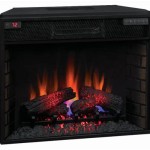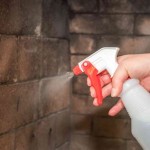Mr. Flame Fireplace Radiator Reviews: A Comprehensive Analysis
Mr. Flame fireplace radiators represent a category of heating appliance designed to integrate the aesthetic appeal of a traditional fireplace with the functional heating capabilities of a radiator. These systems aim to provide both radiant and convective heat, offering a potential solution for supplemental heating in homes or specific rooms. This article will delve into key aspects of Mr. Flame fireplace radiators, examining their design, functionality, performance, and potential advantages and disadvantages.
Understanding the operational principles of these radiators is crucial for assessing their suitability for individual heating needs. Instead of relying solely on open flames, as traditional fireplaces do, Mr. Flame radiators typically utilize gas or electric power to heat a core or element. This heated component then radiates heat outwards, warming objects and individuals in the room directly. Simultaneously, the design often incorporates convective heating, where air is heated as it passes over the warm components and then circulates throughout the room. This combination of radiant and convective heat aims to provide a more even and efficient heating experience compared to solely radiant heat sources.
Design and Construction Considerations
The aesthetic design of Mr. Flame fireplace radiators is a significant selling point. These units often mimic the look of traditional fireplaces, featuring realistic-looking flames, faux logs, and decorative surrounds. The construction materials can vary widely, influencing both the aesthetics and the durability of the radiator. Common materials include cast iron, steel, and various composites designed to withstand high temperatures and provide a realistic appearance. The choice of materials also affects the weight and installation requirements of the unit. Heavier models, particularly those constructed of cast iron, may require professional installation to ensure proper support and ventilation.
Beyond the external appearance, the internal components of the radiator are critical to its functionality. Key components include the heating element (gas burner or electric heating coil), the heat exchanger, and the control system. The quality of these components directly impacts the efficiency and reliability of the radiator. For gas-powered models, the burner design plays a crucial role in combustion efficiency and the realism of the flame effect. For electric models, the heating coil material and design influence the heating rate and longevity. The heat exchanger facilitates the transfer of heat from the heating element to the surrounding air, and its design impacts the efficiency of convective heating. The control system allows users to adjust the heat output and often includes features like timers and thermostats for automated operation.
Furthermore, safety considerations are paramount in the design of fireplace radiators. Features like automatic shut-off mechanisms, overheat protection, and cool-touch exteriors are important for preventing accidents and ensuring safe operation. Gas-powered models require careful consideration of ventilation to prevent carbon monoxide buildup, and proper installation by a qualified technician is essential. Electric models should be equipped with safety certifications and be plugged into properly grounded outlets.
Performance and Efficiency Metrics
Evaluating the performance of Mr. Flame fireplace radiators requires considering several key metrics, including heating capacity, energy efficiency, and heat distribution. Heating capacity is typically measured in BTUs (British Thermal Units) for gas models and in watts for electric models. A higher BTU or wattage rating indicates a greater capacity to heat a larger space. However, the optimal heating capacity for a given room depends on factors like room size, insulation levels, and climate. Choosing a radiator with an appropriate heating capacity is crucial for achieving comfortable temperatures without excessive energy consumption.
Energy efficiency is another important factor to consider. Gas-powered radiators are typically rated by their Annual Fuel Utilization Efficiency (AFUE), which indicates the percentage of fuel energy that is converted into usable heat. Electric radiators are often rated by their Energy Efficiency Ratio (EER), which measures the amount of heat produced per unit of electricity consumed. Higher AFUE and EER values indicate greater energy efficiency, resulting in lower operating costs. However, it is important to note that the actual energy efficiency of a radiator can vary depending on usage patterns and environmental conditions.
Heat distribution is also a critical aspect of performance. Ideally, a fireplace radiator should provide even heat distribution throughout the room, minimizing hot and cold spots. The combination of radiant and convective heating aims to achieve this, but the effectiveness of heat distribution can vary depending on the design of the radiator and the layout of the room. Factors like the placement of the radiator, the presence of obstructions, and the airflow within the room can all affect heat distribution. Some models incorporate features like built-in fans to enhance convective heat circulation and improve overall heat distribution.
Advantages and Disadvantages
Mr. Flame fireplace radiators offer several potential advantages over traditional heating methods. One key advantage is their aesthetic appeal. They can provide the visual warmth and ambiance of a traditional fireplace without the mess and hassle of burning wood. This makes them an attractive option for individuals who appreciate the look of a fireplace but prefer a more convenient and cleaner heating solution. Another potential advantage is their ease of use. Many models feature remote controls, adjustable thermostats, and programmable timers, allowing for convenient and customized heating. They also require minimal maintenance compared to wood-burning fireplaces, eliminating the need for chimney cleaning and wood storage.
Furthermore, fireplace radiators can provide supplemental heating for specific rooms or areas of the house. This can be a cost-effective way to heat only the spaces that are in use, rather than heating the entire house. This targeted heating approach can be particularly beneficial in homes with uneven heating or in rooms that are prone to being colder than others. They can be useful in basements, enclosed patios, or additions that may lack sufficient central heating.
However, Mr. Flame fireplace radiators also have some potential disadvantages. One disadvantage is their limited heating capacity compared to central heating systems. They are typically designed to provide supplemental heating for smaller areas, and they may not be sufficient to heat an entire house in cold climates. Another potential disadvantage is their energy consumption. While some models are relatively energy-efficient, others can consume a significant amount of energy, particularly if used frequently or at high heat settings. It is important to consider the energy efficiency of a radiator and its potential impact on utility bills before making a purchase. Noise can be a concern with some models, particularly those with built-in fans. The fan noise can be distracting, especially in quiet environments. Finally, the initial cost of a fireplace radiator can be higher than other types of supplemental heaters, such as electric space heaters or portable gas heaters.
The lifespan of Mr.Flame fireplace radiators can vary widely depending on the quality of the components, usage, and maintenance. Regular cleaning of the unit, as per the manufacturer’s instructions, is crucial for maintaining efficiency and prolonging lifespan. For gas-powered models, periodic inspections by a qualified technician are recommended to ensure safe operation and prevent potential problems like gas leaks or carbon monoxide buildup. Electric models may require occasional replacement of heating elements or other components. Following the manufacturer’s recommendations for maintenance and usage can greatly extend the lifespan of the radiator and ensure optimal performance over time.

Mr Flame 55322 Fireplace Radiator Right Hand Com

Mr Heater 25 In W 5100 Btu Light Gray Metal Infrared Quartz Electric Stove With Thermostat And Remote At Com

Comfort Zone 5120 Btu Electric Fireplace Heater Furnace With Led Simulated Flame Czfp6 The Home Depot

Comfort Zone 5120 Btu Electric Fireplace Heater Furnace With Led Simulated Flame Czfp6 The Home Depot

Modern Portable Electric Fireplace Stove Heater W Adjustable Led Flame Black

Modern Portable Electric Fireplace Stove Heater W Adjustable Led Flame Black

Real Flame 41 In W White Led Electric Fireplace The Fireplaces Department At Com

Comfort Zone 1 200 Watt Mini Ceramic Fireplace Electric Heater With Simulated Flame In Red Czfp1 The Home Depot

Antique Style Electric Fireplace Adjustable Heater Radiator Led Log Flame Black

Real Flame 72 In W Black Fan Forced Electric Fireplace The Fireplaces Department At Com
Related Posts








